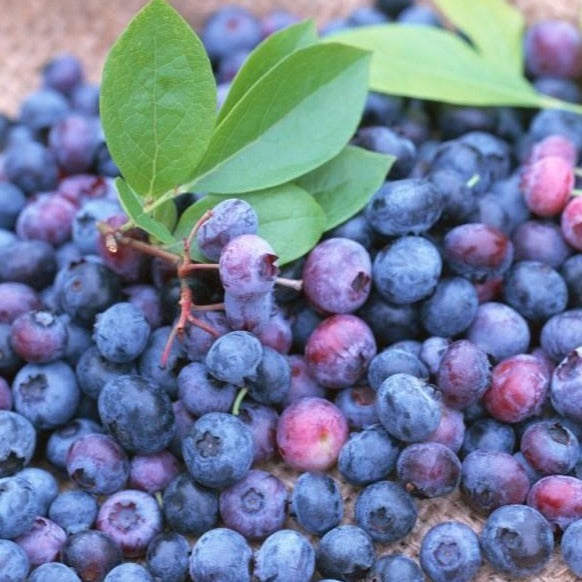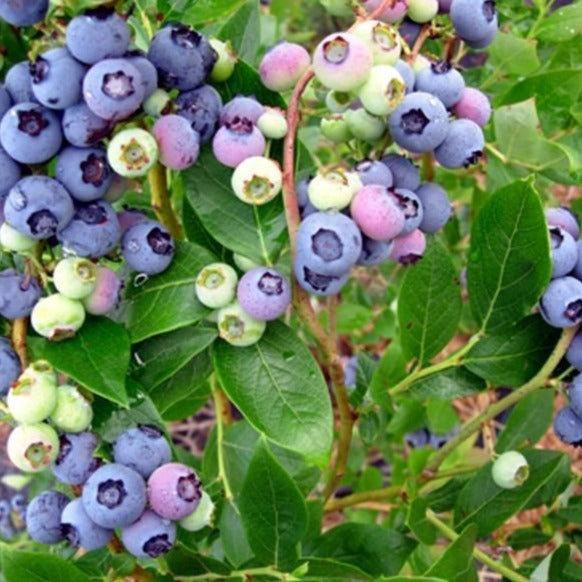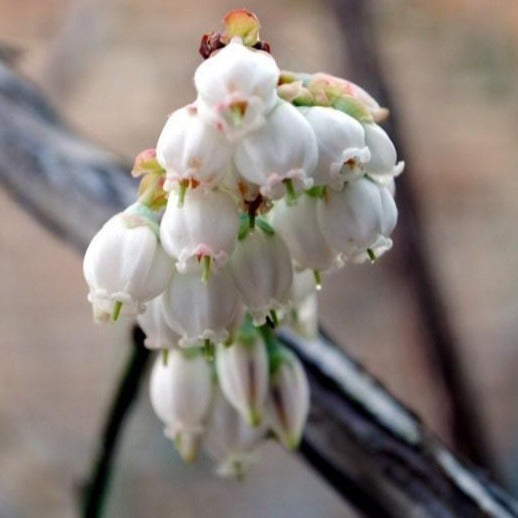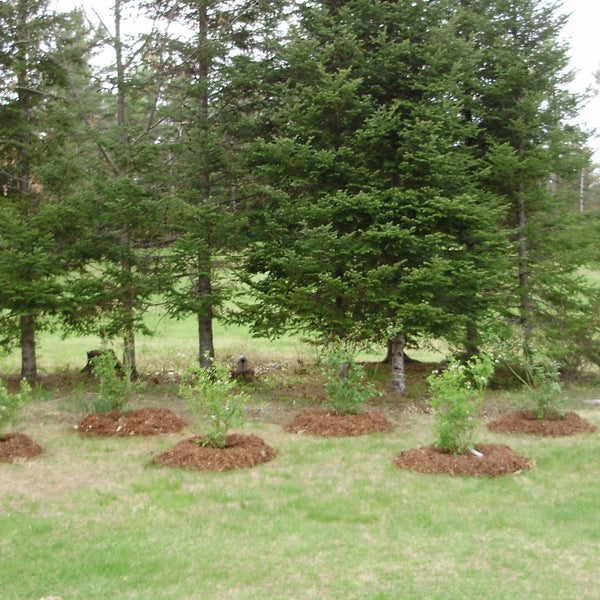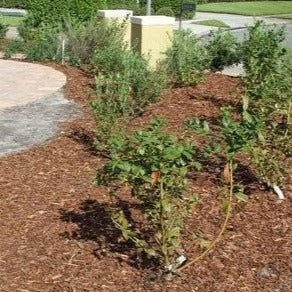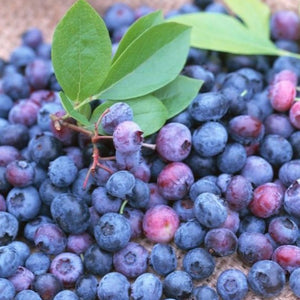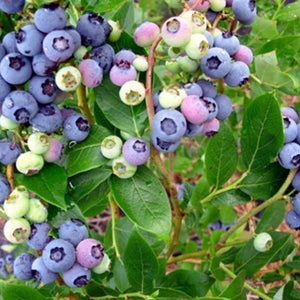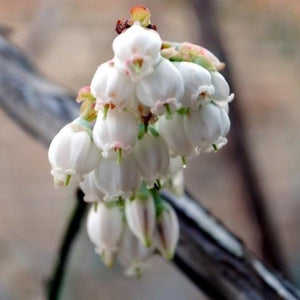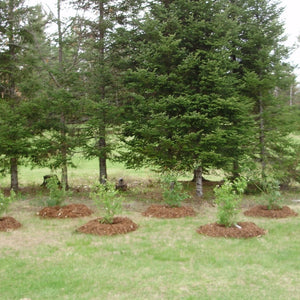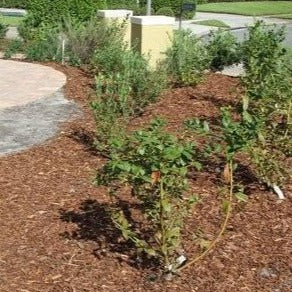Climax Blueberry Bush
Product Details
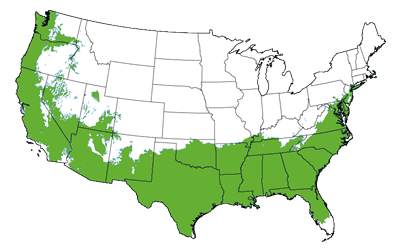 Growing Zones 7-9
Growing Zones 7-9
| Soil Type | Acidic, Well Drained |
| Sunlight | Full, Partial |
| Drought Tolerance | Good |
| Mature Height | 6-10 Feet |
| Mature Width | 5-6 Feet |
| Bloom Color | White |
| Shipping Restriction | AK, AZ, CA, GA, HI, OR, WA |
The Climax Blueberry is a blueberry bush that produces fruit early in the season with a high yield of large, dark blueberries. Blooming from February to early March, the Climax Blueberry bush will be covered in tiny white and pink flowers. The Climax blueberry bush can reach an astounding size. Generally growing to 6-8 ft. tall, the Climax blueberry bush will provide an abundance of blueberries year after year.
The Climax blueberry bush will produce ripe fruit from May to June in the southern growing region. The Climax Blueberry plant can be planted in partial shade to full sun, but is recommended to plant in full sun to obtain the highest possible fruit yield. When planted in full sun, ensure that the plant receives regular water to avoid allowing the soil to dry out.
Many blueberry varieties are self-fruiting; however, the Climax Blueberry requires cross-pollination to produce fruit. Below are some recommendations for the most effective cross-pollinators. Blueberries are categorized as a super fruit. High in vitamin C, antioxidants, and low in calories; blueberries are a great snack that are highly beneficial to your health.
Blueberry Comparison Chart - Self-Fertile
Blueberry Comparison Chart - NOT Self-Fertile
For additional options, be sure to browse our Dwarf Tree and Fruit Trees collections.
When planting your Climax Blueberry be sure to choose the right location and conditions for your new plant to thrive. Spring and Fall are ideal times to plant. However, if you avoid extreme temperatures you can plant your Blueberry almost any time of the year.
Blueberry shrubs thrive in full sun and well-drained, moist, acidic soil. If you have alkaline soil, be sure to amend your soil. To acidify your soil amend with compost, elemental sulfur, or use fertilizers specific for acid loving plants. Mulching with pine straw or pine bark will help over time as they begin to break down, but are not an immediate solution. To improve drainage in something like a heavy clay soil, add compost and be sure to loosen up the soil well before planting. Water deeply when planting and 2-3 times weekly for 3 months while your Blueberry plant is establishing. During the growing and fruiting seasons, a blueberry will do best if the soil is kept moist. Adding a layer of 2 to 3 inches of mulch is highly recommended for Blueberry bushes. Mulching helps to maintain soil moisture and gives added protection during extreme temperatures. Fertilize in spring with a balanced, slow release fertilizer like 10-10-10, preferably for acid loving plants. Blueberries grown in containers will need fertilized 3 or 4 times per year during the growing season as nutrients leech out of the pot when you water. Prune your Blueberries in late winter to remove any dead, dying, or crowded branches and to maintain size. The Climax variety requires a pollinator, like Premier or Tifblue, to produce a good crop of berries.
The best way to prevent disease and pests is by providing the appropriate care for your plants. Proper location choice, watering, and fertilization are the keys to your success. The biggest pests of blueberries is birds. You can put up bird netting to protect your crop. If positioned properly, this is an extremely effective deterrent. Most insect pests feed on the leaves of blueberries. You can treat most of these pests naturally with horticultural oil, neem oil, or insecticidal soap. Blueberry Bushes can occasionally encounter fungal issues. Generally, treating after infection isn't extremely effective, so if you have problems yearly treat in early spring with fungicides to prevent infection. Neem Oil is an organic method of treating and preventing some fungal diseases and pests. The entire shrub must be coated in order for this method to be effective.
The Climax Blueberry will be great in any area of your landscaping as long as its growing requirements are met. This bush looks great as a hedge due to its heavy foliage and great fall color. Use it in a mass planting or even as a specimen; just be sure to allow room for it to spread its limbs. Make your own backyard blueberry orchard and plant these bushes in a row with different blueberry varieties! Enjoy your personal blueberry harvest, right from your backyard.
Learn when to prune your flowering shrubs.
For additional options, be sure to browse our Blueberry Bushes, Dwarf Tree and Fruit Trees collections.


